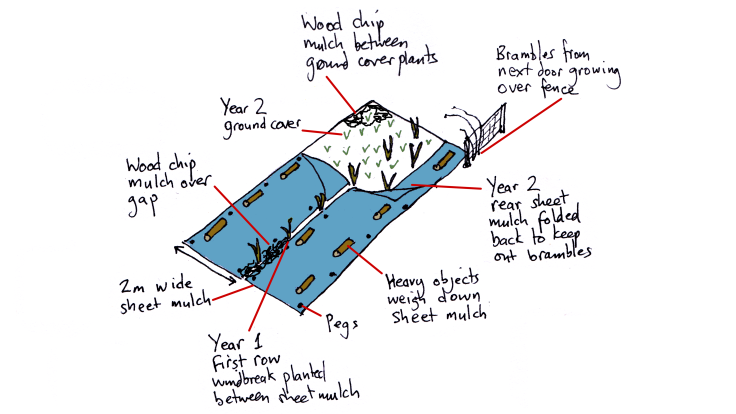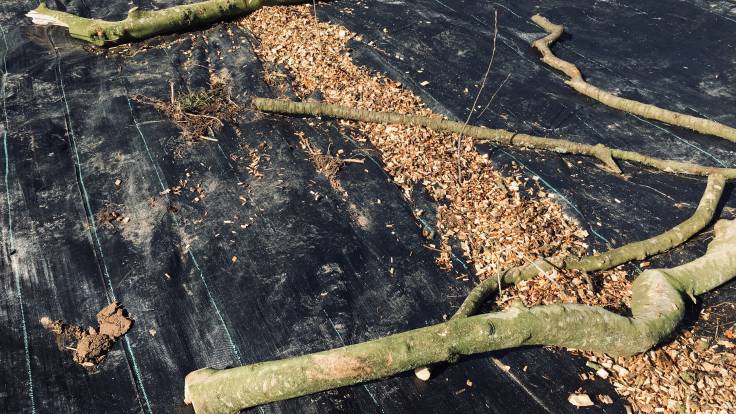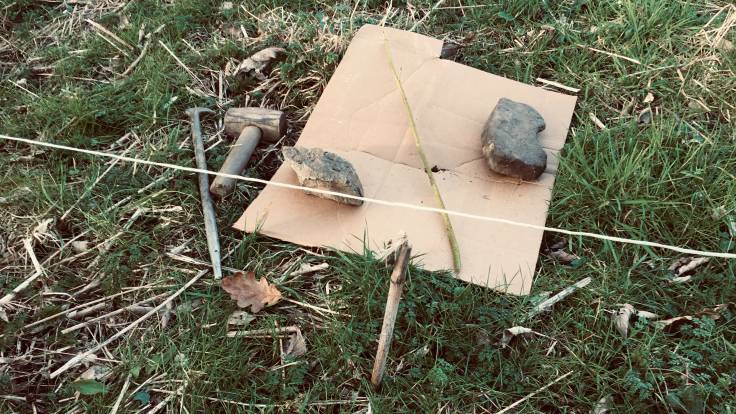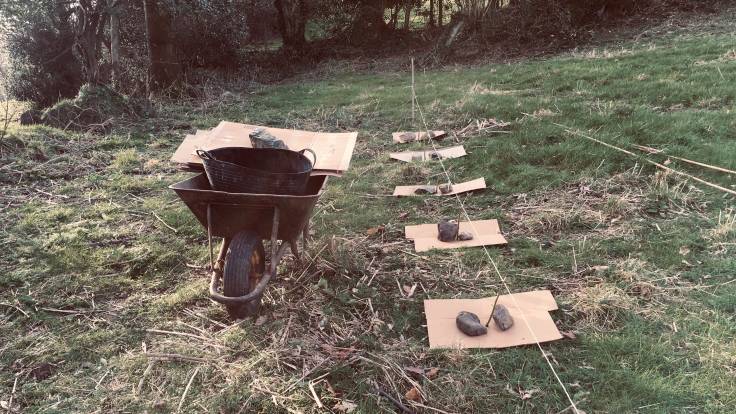
Highly detailed illustration showing a mulching technique for a windbreak in a weedy spot
We’ve been planting an 80 metre long, 5 metre high windbreak on the northern boundary of the Ornamental Forest Garden. If you’re doing something similar, you may find these notes handy.
We’ve planted Amelanchier canadensis, Elaeagnus umbellata, Berberis darwinii and Viburnum opulus in the northern double-width windbreak hedge of the Ornamental Forest Garden. They’ve all grown well in the existing forest garden and they’re all available as cheap hedging plants. The Berberis has been chosen because it’s evergreen and is planted by the wildlife pond, so there should be less leaf fall into the pond.
However, there’s a lot of bramble and nettle, fine forest garden plants in their own right but not what you want in the midst of an establishing windbreak hedge.
After digging out most of the bramble, we’re using woven plastic sheet mulch to kill off the rest. We’ve planted a single line between the two rows, so that the sheet can be re-used. There are pegs to temporarily hold down the sheet but it’s imperative to put lots of really heavy objects down, otherwise the sheet will take off in the next storm! Also, be sure to put down some wood chip or hay mulch between the gaps.

Mulch the gap! Otherwise, there will be weeds!
In year 2, we’ll totally remove the front row of sheet mulch and fold back the rear row onto itself, and then plant the second windbreak row. Then it’s a thick wood chip mulch and plant a cheap and cheerful ground cover plant (Glechoma hederacea is a favourite, as it grows well locally).
The reason why the rear row is folded back onto itself is so that the bramble from next door finds it harder to tip layer into the hedge. In a few years time, the hedge will thicken up enough so that there’s not enough light for the bramble to grow into the hedge.
I’d heartily recommend a double width windbreak if you are on an exposed site and if you have the space. Windbreaks really are a key feature of a healthy forest garden.

It’s a bit Heath Robinson but it will have to do for now
On the south side of the garden, I’ve planted Yellow Dogwood ([Cornus sericea ‘Flaviramea’](Cornus sericea ‘Flaviramea’)) cuttings. I was going to use the same method but, because there’s no ready supply of wood chip, I can’t take the sheet mulch up from the other forest garden, which means I’ve had to create temporary cardboard mulch mats.

Will they survive? Come back in 2020 for the next riveting instalment of 'What Happened To My Windbreak?
This hopefully buys me a bit of time before I have to put sheet mulch down on either side. And I have my fingers crossed that there’s not a drought this year as I had quite a few Cornus cutting casualties in the heatwave of 2018.